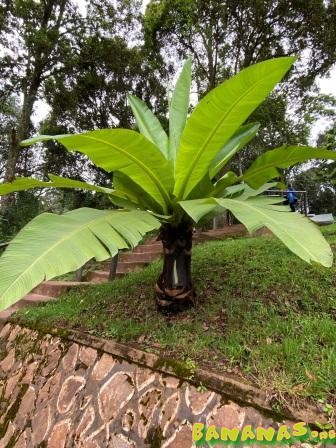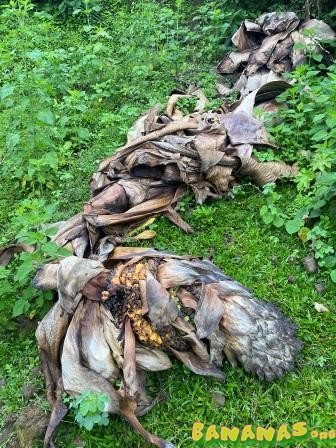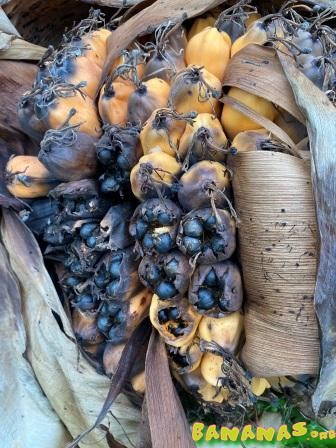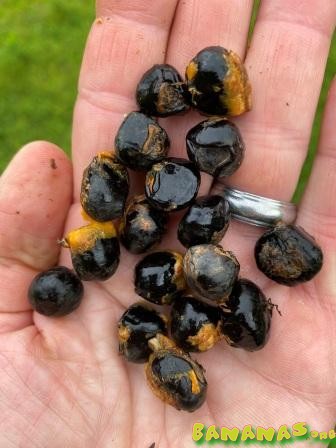Ensete - I did come across 3 sites with Ensete, but I am pretty sure they all were planted on purpose. My understanding is at least one variety, maybe 2? are native to Uganda, but I didn't see any growing in what I would call 'the wild.'
The plants I did wee were all growing between 2000 and 2500 meters and it's my understanding that it's typical for the native varieties to grow at altitude where it's a bit cooler.
The first one I came across was this beauty. I have no idea what it is and I can't seem to find any pics or description that might lend some idea of it's provenance. If anyone has any input, I would be very interested. This particular plant is obviously well groomed and still fairly small....about 1.5 M tall or so. I did see larger specimens of what I assumed were the same variety growing little higher in the same general area but were interplanted with other items, so hard to take any quality photos of:

Beautiful, almost black p-stem:

The second area I found Ensete growing was on an Island on Lake Bunyonyi at a slightly lower elevation. Here I found what I think are at least 2 varieties, maybe more. Some of them looked very similar to one another with only slight characteristic differences. None of them appeared to be groomed at all.
This looks to me likely to be ventricosum. I was told all of the plants here were "wild banana" as opposed to the cultivars grown, primarily in Ethiopia, for the edible corms. The base of this plant is about chest height, growing on the edge of a steeper slope, so not quite as big as it looks. The p-stem and proximal midribs definitely have a lot of black on them as well. I don't know if that is normal for ventricosum or not.

There were a lot of plants in flower, so I am sure there was ample opportunity for interbreeding/hybridization, which may explain some of the slight differences in characteristics I noticed.
Here are a few pics of the various plants I felt compelled to take pictures of. There were probably at least 30-40 plants overall at this site.
This one was cool. It had a dark red flower and p-stem, which I didn't necessarily notice on other specimens, and little evidence of the red color on the leaves or midribs which was interesting to me.



These photos are of the various green and black forms. some of the specimens differed in the color of the midribs, with some being totally green and others showing signs of a reddish tint. I don't know what the differences are due to, whether environmental or genetic.
Here is a green leafed, black p-stem specimen with a green flower:


And the developing fruit from that flower:

All green leaves, black p-stem:


Green leaves, black and green p-stem, redish midribs, may be similar to the one I am standing under:


I was able to collect some seed from 3 different plants. Unfortunately the plants were, to my eye, completely unidentifiable as they had all be dead for some time and had lost all color. So I don't really know what the adult plants from these seeds will look like, assuming of course they are viable. I believe the oldest seeds I collected were from plants that had fallen about 2 months ago.
Here area few pics of one the the fresher plants I collected from:

Seeds very visible within the disintegrating fruit:

Plucked seeds in my hand:

And finally, an older fall site with the only evidence being the seedlings popping up where they fell

If anyone has any ideas as to the nature of these plants I would be very interested to hear them.